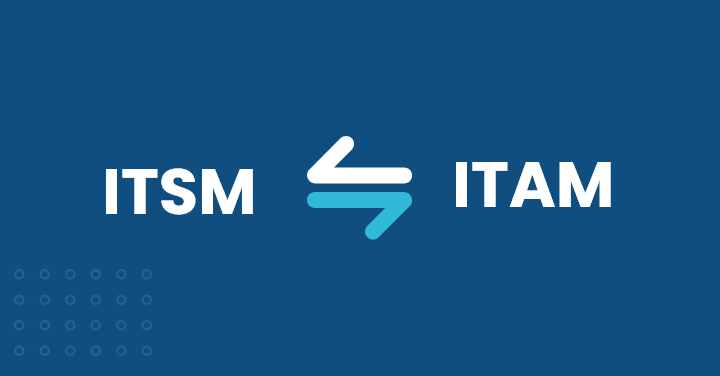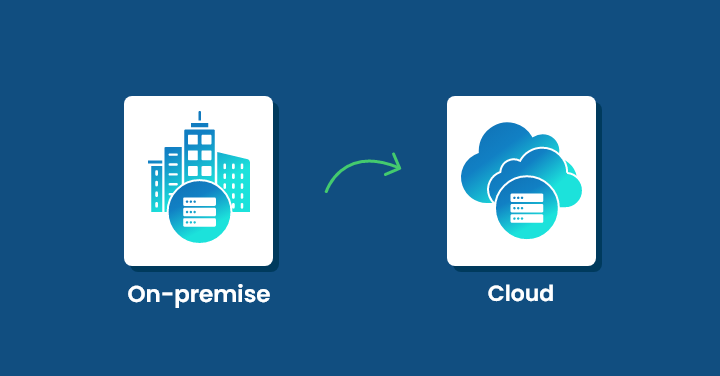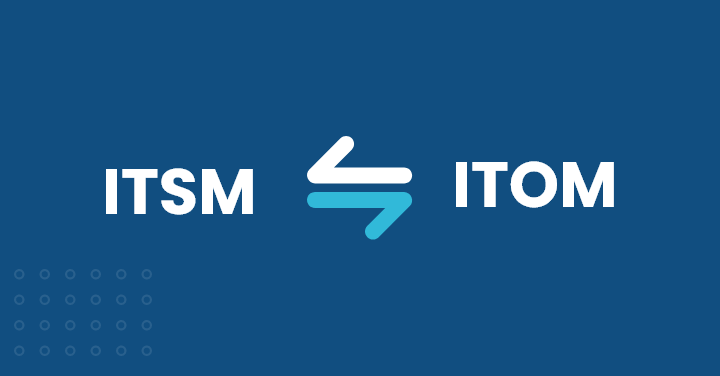The 21st-century landscape is constantly evolving; the critical factor responsible for the change is the introduction of new technologies and innovation.
Technological advancement has become so complex that organizations can no longer achieve their business objectives without an efficient IT management system.
Successful management in this digital age requires businesses to embrace their skills and work with new technologies. Technology is like the backbone of IT operations.
This is why it is essential to acquaint yourself with the main disciplines, i.e., IT Asset Management (ITAM), IT Service Management (ITSM), and IT Operations Management (ITOM).
This post will discuss how ITAM vs. ITSM vs. ITOM work and their definitions, objectives, benefits, and core components. They might be interconnected with one another but serve different purposes.
For example, asset management is the main focus of ITAM, as well as effective service delivery for ITSM and improved operational processes for ITOM.
Further, learn how these disciplines differ and are important in IT infrastructure optimization.
What is IT Asset Management (ITAM)?
IT Asset Management (ITAM) is a process that involves monitoring and managing all IT assets and providing recommendations that support the organization’s information technology objectives.
Its main goal is to track and manage asset lifecycle costs, usage, and risks and ensure regulatory compliance and operational efficiency.
Key Objectives:
- Asset Tracking and Inventory Management: Maintaining a detailed inventory of all your IT assets, including hardware, software, and virtual assets.
- Lifecycle Management: Ensure that all assets are managed effectively throughout their lifecycle, from acquisition to disposal.
- Compliance and License: All assets ensure compliance with regulatory standards and software license
- Cost Control and Optimization: manage and optimize the costs associated with IT infrastructure by eliminating unnecessary services and resources
Core Components:
- Asset Discovery and Inventory Tools: Tools that help you discover and store records related to IT assets automatically is better for knowledge management
- License Management Systems: Manage software licenses and track if they are over or under-licensed
- Compliance and Audit Processes: Runs regular audits to ensure assets comply with industry-specific regulations and data protection laws
Benefits:
- Cost Savings: Monitoring assets and optimizing their usage will help eliminate unnecessary expenses.
- Improved Compliance and Risk Management: keep you out of disruptive problems by following the industry rules and obtaining licenses
- Enhanced Decision-Making: This tool generates accurate data on asset costs, risks, and usage, which can be used to make better decisions.
What is IT Service Management (ITSM)?
IT service management (ITSM) is a strategic approach that involves managing and delivering IT services within an organization. Its primary purpose is to ensure that all processes and policies are in place to meet the organization’s needs and achieve goals for optimal performance.
Key Objectives:
- Streamlined Service Delivery and Support: monitors how IT teams manage the processes and delivery of IT services to users
- Incident and Problem Resolution: Quickly identifies issues and resolves incident problems
- Change and Release Management: reduces disruption by controlling changes and releases within ITIL
- Service Level Management: makes sure that services fulfill predetermined performance standards
Core Components:
- Incident Management Systems: allow IT professionals to better manage and resolve incidents in real-time
- Change and Configuration Management: enable team members to manage all changes and configuration settings
- Service Desk Operations: runs centralized operations to manage user requests and service issues quickly
- ITIL Framework: offers best practices and structured procedures for efficient administration at every level
Benefits:
- User Satisfaction: IT service management helps improve service quality, resulting in more satisfied customers
- Improved Efficiency: streamlines all processes to minimize downtime and improve efficiency
- Better Alignment with Business Goals: ensures all IT services support and align with business objectives
What is IT Operations Management (ITOM)?
IT Operations Management (ITOM) focuses on different areas, including security, IT system availability, software and hardware management, event management, and more to ensure smooth operations.
Its primary goal is to optimize IT system performance and ensure it meets business requirements.
Key Objectives:
- Ensuring System Availability and Performance: make sure that systems are available at all times and deliver optimal performance
- Monitoring and Managing IT Infrastructure: constantly keeps an eye over all the infrastructure components and manages them properly
- Incident Response and Resolution: IT staff responds and resolves operational incidents in real-time
- Automation and Orchestration of Routine Tasks: automates all the repetitive and daily operations to improve overall efficiency
Core Components:
- Network and Server Monitoring Tools: helps organizations watch over the performance of networks and servers in real-time
- Performance and Availability Management: tracks the IT system availability and performance for customer satisfaction
- Automated Incident Response Systems: automatically responds to incidents quickly to build user trust
- Capacity and Resource Management: manages the capacity and resource usage for all IT infrastructure systems and components
Benefits:
- Improved Operational Efficiency: uses automation and proactive management systems to improve overall efficiency
- Proactive Issue Detection and Resolution: identifies issues and resolves them in real-time before they create any negative impact on IT operations
- Optimized Performance and Reliability: tracks all events, software, hardware, and other aspects to deliver better performance to its users
Key Differences Between ITAM vs. ITSM vs. ITOM
1. Scope and Focus
ITAM focuses more on managing and monitoring an organization’s hardware, software, and virtual assets.
It ensures that each asset is being fully utilized and maintained.
Further, it meets the regulatory requirements and is beneficial in cost optimization.
ITSM, on the other hand, focuses on the delivery, support, and design of IT services.
It involves best practices and standardized processes to improve service quality and meet business objectives and end-user needs.
Meanwhile, ITOM monitors and maintains an organization’s IT infrastructure and operational components.
It guarantees the effectiveness, reliability, and IT infrastructure performance to support business processes.
2. Primary Users
Asset managers, Procurement teams, and financial managers are some of the primary users of the ITAM system.
Asset managers track IT asset status through their lifecycle, whereas procurement teams are more involved in new asset acquisitions.
On the other hand, financial managers focus on ensuring that assets are correctly used and that investments align with set financial goals.
Service desk staff, IT managers, and Service delivery teams are the primary users of ITSM systems. Service desk staff generally handles user requests and incidents.
In contrast, IT managers focus more on ensuring that IT services align with organizational goals, and service delivery teams implement and design IT services to enhance user satisfaction.
The key users of the ITOM system are IT operations teams, system administrators, and network engineers.
IT operations teams ensure smooth and efficient working and operations within an organization.
System administrators are responsible for server management and maintenance. Network engineers focus on other key areas like security, connectivity, and infrastructure performance.
3. Processes and Tools
The ITAM tool involves a wide range of processes for effective management of IT assets, i.e., asset management and discovery, license management, compliance auditing, and lifecycle management.
Several ITAM tools available in the market, like Flexera and Ivanti, can aid your organization in tracking asset status and inventory management.
Further, you may use Configuration Management Databases (CMDBs) to track information about assets as they store all the data about the IT environment in one place.
For better service delivery and management, ITSM tools involve processes such as incident management, problem management, change management, and more.
These processes help monitor and manage service requests and resolve issues for better customer experiences.
To achieve goals, you may also use the ITIL framework, which includes various best practices and processes for seamless service delivery throughout their lifecycle.
ITOM manages and monitors system availability and performance, security, network management, automation tasks, and incident response.
You can even invest in the event management system to track and respond to IT environment events.
4. Goals and Objectives
The primary goal of the ITAM system is to optimize assets, ensure compliance, and monitor use to reduce costs.
The ITAM solution allows users to track which resources are underutilized or overutilized, which can help in cost management and eliminate unnecessary expenses.
Another objective of this solution is to ensure compliance with licensing and provide accurate asset information for better decision-making.
Unlike ITAM, the main goal of ITSM solutions is to improve the quality of IT services and enhance customer satisfaction.
Further, it focuses on improving service delivery and support processes, which are crucial in making performance more efficient and effective.
Another vital objective of ITSM solutions is to ensure that IT services align well with business objectives and drive quality results.
For ITOM solutions, the main objective is to resolve operational issues and manage IT infrastructure performance.
By detecting issues in real-time, businesses can reduce disruptions to food count and ensure smooth operations.
Further, ensuring system stability and reliability is another critical goal.
5. Integration and Interdependencies
The interrelated disciplines of IT asset management, IT service management, and IT operations management all work together to form a comprehensive IT management strategy.
ITSM utilizes crucial information and insights from ITAM to manage and support the organization’s IT assets efficiently.
ITAM assists ITSM in maintaining service quality and compliance by ensuring that services are provided using available and compliant assets.
To handle changes and incidents and provide services, ITSM uses the asset data from ITAM.
By ensuring that service delivery is based on accurate and current asset information, this integration raises the general efficacy of ITSM procedures.
ITOM is essential to guarantee that the operational facets of the IT infrastructure are functioning correctly.
The infrastructure consists of assets monitored by ITAM and backed by ITSM procedures.
ITOM maintains a reliable and secure IT environment by automating repetitive processes, controlling problems, and monitoring performance.
ITSM needs to operate efficiently to provide reliable services.
6. Metrics and KPIs
Metrics and key performance indicators (KPIs) are essential tools for assessing the efficacy of IT asset management (ITAM), IT service management (ITSM), and IT operations management (ITOM).
You can measure ITAM solutions’ effectiveness by checking asset utilization rate, ROI for assets, compliance rates, and total cost of ownership.
However, for ITSM, you must check the total number of incidents detected in a timeframe and incident resolution time.
Further, you must track key metrics like SLA compliance, customer satisfaction score, and change success rate.
For ITOM tools, you must check the system uptime and availability, mean time to repair (MTTR), resource usage, and resolution time.
Some key KPIs for ITAM include compliance audit success rate, how many assets were tracked accurately, cost savings by optimizing assets, and downtime reduction rate.
For ITSM, key KPIs are the percentage of changes implemented without incidents and the average time to resolve incidents.
However, in the case of ITOM, key KPIs are resource utilization efficiency and the average time taken to identify and resolve issues in the operation system.
7. Impact on Business Outcomes
With an effective ITAM strategy, you can optimize your assets and eliminate unnecessary resources from the inventory, which will eventually positively impact your cost management and financial plans.
By tracking all Information Technology assets and their usage throughout the lifecycle, you can save on additional expenses and have a positive business impact.
Also, it eliminates legal and financial risks associated with non-compliance.
Thus, it offers financial security and protection against reputational damage.
You may make more informed decisions and improve organizational efficiency with better asset management.
ITSM, on the other hand, can improve your user experience and productivity by managing the quality and efficiency of IT services.
By constantly monitoring incidents, resolving problems, managing changes, and monitoring service delivery, you can ensure that IT services contribute to business goals.
You can directly improve customer satisfaction by identifying problems and minimizing disruptions—further, improved productivity results in quicker issue resolution and more effective service provision.
ITOM guarantees the efficiency and reliability of IT infrastructure, which is essential for continuous business operations.
The ITOM processes ensure that systems and networks operate at peak efficiency and are highly available by constantly monitoring and controlling the IT environment.
Operational efficiency increases and human workload is decreased by automating repetitive operations and managing proactive issues.
The IT infrastructure’s resilience is supported by ITOM’s emphasis on performance monitoring and incident response, which enables the company to react swiftly to operational difficulties.
In short, with the help of ITOM strategies, you can reduce downtime, improve productivity and agility, and support the organization’s overall resilience.
8. Risk Management and Compliance
ITAM aims to control different risks connected to the possession and application of IT assets. Monitoring software licensing to prevent noncompliance is one of the main issues.
Using unauthorized software can have negative financial and legal repercussions, which can be avoided with proper license management.
Additionally, ITAM ensures that assets are adequately maintained to prevent malfunctions and prolong their usable period, lowering the possibility of unplanned downtime and related expenses.
Furthermore, overseeing the IT asset’s end-of-life disposal is essential to preventing data breaches and guaranteeing the safe deletion of sensitive data.
However, ITSM’s core focus is managing risk related to providing and administrating IT services.
This involves reducing the risks associated with modifications to IT systems, like service interruptions or decreased functionality due to poor change management.
By minimizing the impact of problems on business operations and ensuring prompt resolution, ITSM upholds high service availability standards.
Furthermore, ITSM highlights how crucial it is to maintain service level agreements (SLAs) to control user expectations and guarantee reliable service delivery.
ITOM, on the other hand, focuses on managing operational risks like system outages, security breaches, and performance deterioration.
With a more predictive approach and automation, the IT department can find and fix these problems before they affect daily operations.
By ensuring that the IT infrastructure is steady and reliable, ITOM’s risk management techniques support continuous business operations and uphold service quality.
In terms of compliance, ITAM is necessary to ensure that corporate policies, legal obligations, and software licensing agreements are followed.
ITAM techniques such as extensive asset monitoring and regular audits are crucial to avoid illegal software and hardware usage.
These steps guarantee that the company stays compliant with the law and out of trouble.
On the other hand, ITSM frameworks, like ITIL processes, have extensive procedures for handling governance and compliance.
These frameworks guarantee that IT services abide by company policies, legal requirements, and industry standards.
Regular reviews and audits are incorporated into ITSM procedures to ensure continuous compliance.
Similarly, ITOM ensures that all systems and methods used for operations adhere to industry standards, security guidelines, and operational requirements.
This includes monitoring systems to ensure they adhere to operating manuals and setups.
FAQs:
Understanding how ITAM vs. ITSM vs. ITOM differ is essential before implementing them in your current IT environment. Each has its roles and functions that one must acknowledge before implementation.
Implementing the three main disciplines of IT infrastructure requires a strategic approach. First, assess your IT applications and other IT infrastructure components.
Identify their areas for improvement and accordingly plan your goals and strategy. Once you have identified problem areas, invest in appropriate tools and platforms.
For example, software asset management tools for ITAM, ServiceNow for ITSM, and other monitoring tools for ITOM. Also, train your employees and team members on best practices and ensure each worker works according to the assigned roles and responsibilities.
Constantly watch over administrative processes, refine your strategies if needed, and keep track of the changing business requirements to improve efficiency.
The main difference between ITAM and ITSM practices is their focus. ITAM focuses on managing IT assets, i.e., keeping track of them, ensuring their maintenance, and optimizing them through their lifecycle.
However, ITSM concentrates only on managing and delivering IT services and ensuring they align with the business objectives. It ensures that these tools offer good support and effective service delivery, resulting in better user experience and satisfaction.
Secondly, ITSM focuses on the services rendered using such assets, whereas ITAM handles the assets.








